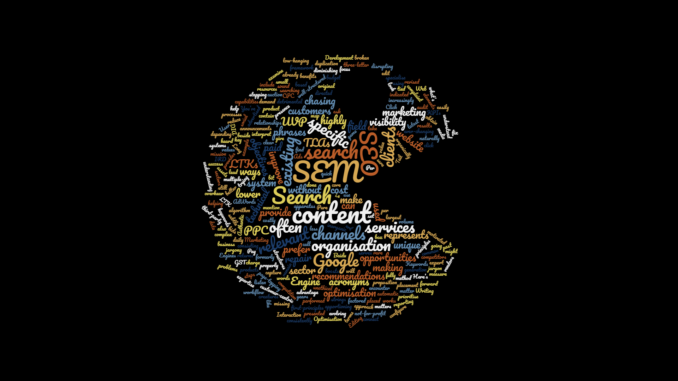
With some 12 years in the not-for-profit and small business sectors, we overhear this complaint more and more often. SEO, SEM, PPC… You’ve heard they matter, but your resources are tied up with the GST, IRD, DIA, KPIs, and all the three-letter acronyms (TLAs) you already understand.
We specialise in stepping past the jargon and helping you to focus on what matters for your organisation.
Search optimisation and marketing is often presented as a complex and evolving field, but we prefer a first-principles approach we call customer-centric optimisation, making use of your existing assets to obtain the key benefits of all those acronyms without chasing diminishing returns.
Still sound a bit jargony?
Here’s how it works:
- We listen to you: You are the expert in your organisation. We ask about your customers, your products and services, your values and your objectives.
- We look at your existing channels: We audit your website and social media content and technical capabilities, using our expertise in Search, Web Development, User Interaction, Writing and Editing. We make recommendations to improve each of these.
- We map your processes: We examine your workflow and data for low-hanging opportunities to improve your search visibility and connect more easily and consistently with customers.
- We fix what’s broken: We repair (or help your vendors repair) any technical problems with your channels, edit your revised content, and configure any relevant channels and reporting systems that are missing. We also make recommendations about relevant third-party services and any opportunities to reduce duplication and cost.
- We provide a framework: We give you a set of clear steps that you can prioritise going forward on your own terms, without disrupting your existing mission, and ways to measure your success. This might include some paid search marketing, depending on your sector and objectives.
For those rare creatures who prefer the TLAs, we can do those too:
- SEO: Search Engine Optimisation is about understanding the ways Search Engines like Google and Baidu organically find and interpret website structures, content, and relationships. Pure SEO is an ever-changing field, but the core principles remain the same. SEO, done properly, is not about chasing the latest algorithm announcements for quick boosts in visibility, or trying to game the system (these are both detrimental and costly, not to mention unethical) but about making sure your content is well-structured, represents your UVP (unique value proposition) fully, and serves your clients.
- SEM: Search Engine Marketing is the apparatus of inorganic, i.e. paid and directed, search presence. Google Ads (formerly AdWords) is the largest example of this, and provides the page-topping advertised results when a Google search is performed, indicated by the subtle “Ad” box beside the url.
- PPC: Pay Per Click is a common method by which SEM services charge their clients. An automatic auction system is often used, where bids are placed for relevant keywords, apportioning ad placement between competitors based on demand and daily budget.
- LTK: Long Tail Keywords are the highly specific phrases consisting of multiple words and unique to your organisation, product, or sector. Authentic, original content that represents your UVP will naturally contain LTKs. SEM, when used, should take advantage of these to capture the lower volume but highly motivated clients who are searching with such specific strings. When factored into SEM, LTKs provide better lead generation with a lower cost per click (CPC) because increasingly specific phrases encounter less competition.
